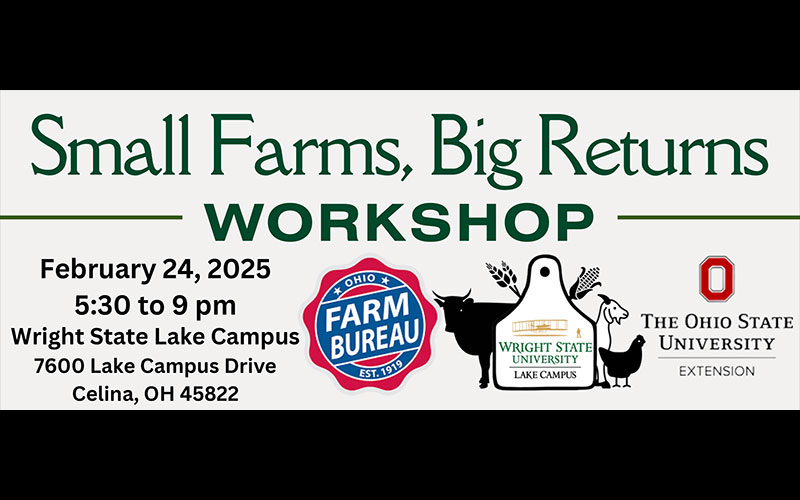
by CrownRandall | Feb 17, 2025 | Agriculture
CELINA – The event is geared to help any farm, 1 to 1000 acres, learn about opportunities to diversify their farm portfolio to generate revenue through fun regenerative farming methods. These are just a few questions that will be answered during this informational evening you will not want to miss!
Did you ever want to know how to establish a price for your eggs, meat, produce or other farm products? How about raising laying hens or meat birds by utilizing grass, pasture or garden areas? What is the key to a good pasture for your livestock and how much area do you need?
Every farm can use a garden but how could it help your bottom line?
These are just a few questions that will be answered during this informational evening you will not want to miss!
Small Farms, Big Returns Workshop is scheduled for February 24 from 5:30 to 9 pm at the Wright State Lake Campus, located at 7600 Lake Campus Drive in Celina.
Register today at https://tinyurl.com/SmallFarmsBigReturns
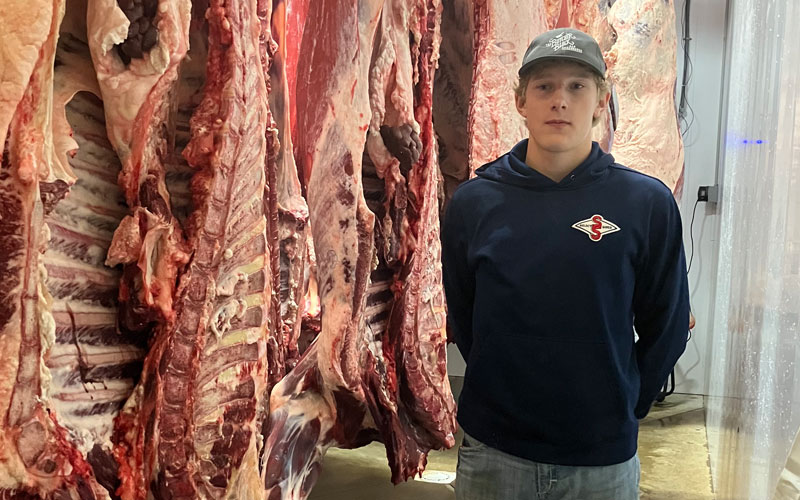
by CrownRandall | Feb 17, 2025 | Agriculture
VERSAILLES – Blake Schmitmeyer is a senior at Versailles High School and participates in the Agriculture Education Capstone Program and has been selected as the capstone highlight student of the month. The Versailles Agriculture Education Capstone Program is in its 13th year of existence. Blake is the son of Matt and Liz Schmitmeyer of Versailles, Ohio. Capstone is a program that gives Versailles High School Junior and Senior Students who are enrolled in agriculture education an opportunity to gain real-world employment experiences and opportunities while in high school.
Blake started working at The Butcher Block and Smokehouse the summer of his junior year of capstone and has continued to work throughout his senior year and has worked over 2,000 hours. Blake’s primary roles include: processing beef and pork, including cutting it off the bone, packaging, and labeling finished products. He also plays a key role in maintaining a clean and safe work environment, assisting with the cleaning and sanitization of the processing and kill rooms. Blake regularly helps customers with their custom orders, he manages the stocking of our retail meat freezer and the organization of both our custom beef and pork freezer and hanging cooler. Matt Schmitmeyer, owner of The Butcher Block and Smokehouse is quoted as saying “Blake’s work ethic is exceptional. He is dependable, hardworking, and always eager to expand his skill set. He demonstrates a high level of maturity, showing respect and courtesy to both customers and colleagues alike. His positive attitude and willingness to learn make him an asset to our team.” Blake plans to attend Wright State University Lake Campus after graduation and plans to continue to play an instrumental role in The Butcher Block and Smokehouse.
The Butcher Block and Smokehouse was established in 2013 and in 2019 was purchased by Matt and Liz Schmitmeyer. The Butcher Block Smokehouse is a USDA-inspected meat slaughter and processing facility. Their main focus is on the custom processing of cattle and hogs, but also work with goats, sheep and bison. The Butcher Block and Smokehouse harvest around 1300 beef and 1300 hogs yearly. The Butcher Block and Smokehouse operates a retail meat store in addition to the processing.
This year 53 students are enrolled in the Versailles Agriculture Education Capstone programs and are leaving school after their daily required courses are complete and working at area businesses. The goal of the spotlight is to highlight each month one of the students that participate in the capstone program and highlight the skills/knowledge they are gaining, and the roles/assets they are to their business. The students enrolled in capstone also use their employment as their Supervised Agricultural Experience Program. As part of their grade in capstone, students are required to keep detailed records of their hours worked, earnings and skills performed. In addition to the record books, capstone students are being evaluated at the end of each nine weeks by an evaluation completed by their employer.
Congratulations to Blake Schmitmeyer and Thank you to The Butcher Block and Smokehouse for this opportunity.
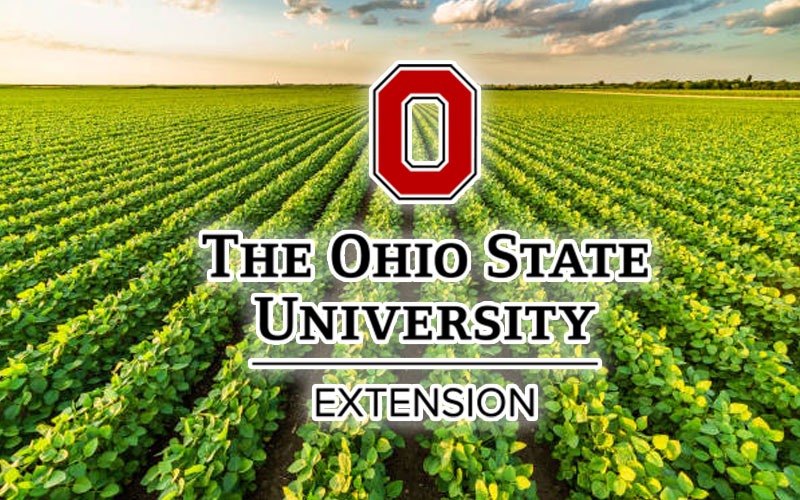
by CrownRandall | Feb 17, 2025 | Agriculture
Dairy Margin Coverage and Dairy Risk Management for 2025: “The dairy industry has a history of volatility in profits coming from both income (milk price and the beef market) and expenses (feed prices). Using multiple strategies to manage these risks in 2025 can help protect your operation from volatility. Dairy Margin Coverage (DMC) through the U.S. Department of Agriculture (USDA) is one of these tools that allows producers to manage both milk price risk and feed cost risk together. This program allows producers to protect their operations from market fluctuations.” Risk management is an important aspect of any business, and the dairy industry in particular can experience volatility. One tool that can be used by dairy producers is Dairy Margin Coverage (DMC) which is the primary topic of the article from OSU Extension Specialist Jason Hartschuh. Hartschuh discusses what DMC is, some finer details of how it works, and some other risk management tools that should also be considered. https://dairy.osu.edu/newsletter/buckeye-dairy-news/volume-27-issue-1/dairy-margin-coverage-and-dairy-risk-management-2025
Drone Activity Update: “Drones, or more accurately named Unmanned Aerial Vehicles (UAVs), have helped provide new methods of pesticide applications and agronomic data collection to assist farmers with productivity and efficiency. Yet the possibility of unknown drones flying over a farm property can cause concerns. Recent conversations and sightings of drones in rural areas have producers raising questions such as “what can I do about suspicious drone activity” and “can I shoot down a drone over my property?” Federal and state laws provide answers to these questions. Here are several points farmers need to know about dealing with UAVs traveling over their properties.” If you, like many people, have had questions about the recent drone sightings, this article will provide good answers. Peggy Hall, Attorney and Director of the OSU Agricultural and Resource Law Program, provides great details on the current drone situation. Specifically, she provides some background information, discusses the legal requirements for drone usage, and shares the best ways to respond to a suspicious drone sighting. https://farmoffice.osu.edu/blog/property-owners-and-suspicious-drone-activity
New Box Tree Moth Factsheets: “We ended last season with box tree moth (BTM)… squarely on our radar. We know about infestations in two locations in Ohio, but we don’t know if there are any other BTM infestations elsewhere in our state. We learned that this non-native is only a potential boxwood killer. It can be managed.” The Box Tree Moth is not something we have yet experienced in Darke County, but it is an invasive pest that is important to be aware of due to its presence in Ohio. Three new factsheets are available through OSU Extension and are linked in the attached article. https://bygl.osu.edu/index.php/node/2455
Planning Spring Grazing Improvements: “It is hard to think about forages when your main concern is running around making sure there is thawed water for all the animals. But this can be a great time to think back to those ‘It sure would be nice if’ projects that came up throughout the year when you had no time to deal with them. Thanks to the drought conditions of 2024, one thought was likely ‘How can I get better productivity and utilization of my pasture?’” While pastures and forage production may not be the main thing beef producers are thinking about now, preparing pastures for spring will help to improve production. Fence repairs, pasture divisions, and other preparations can have great benefits when spring arrives. https://u.osu.edu/beef/2025/02/12/planning-spring-grazing-improvements/
Selecting Corn Hybrids for Disease Management: “Corn hybrid selection is critical to maximizing your cow’s production. When selecting hybrids, we usually consider factors like digestibility, energy, crude protein, milk per ton, and milk per acre. Foliar corn disease susceptibility is a critical factor to consider as it can affect both grain and forage quality, requiring a multi-prong approach to managing feed quality. Stalk and ear rots can be even more detrimental as they produce mycotoxins.” There are many factors to consider when selecting a corn hybrid, and one consideration is disease management. Learn more about this topic from this article from OSU Extension Specialist, Jason Hartschuh. He discusses impactful corn diseases, and how hybrid selection is one management tool that should be used. https://dairy.osu.edu/newsletter/buckeye-dairy-news/volume-27-issue-1/corn-hybrid-selection-disease-management
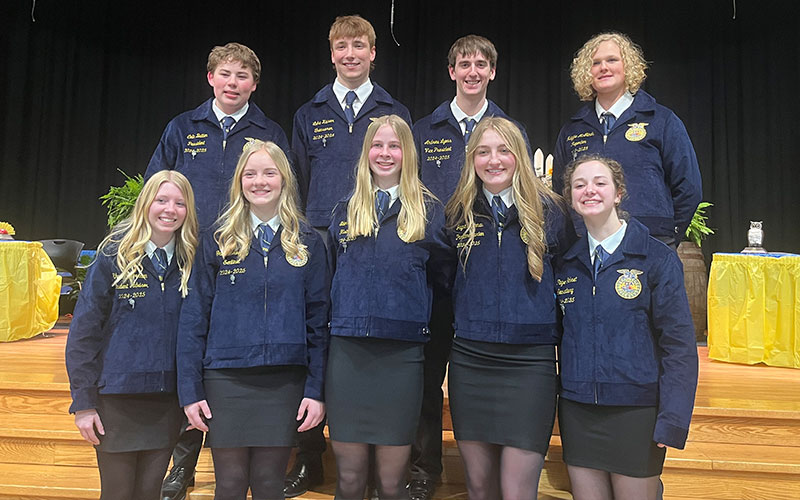
by CrownRandall | Feb 12, 2025 | Agriculture
VERSAILLES – The Versailles FFA Chapter is celebrating National FFA Week February 15-22, 2025. The focus of National FFA Week is to tell the community and the country about the great opportunities available through FFA.
From its beginnings in 1928 as the Future Farmers of America, the National FFA organization today reaches out to all 50 states, Puerto Rico and the Virgin Islands. FFA is committed to developing character and leadership skills, as well as preparing members for a lifetime of civic leadership and career success.
As a part of National FFA Week, Versailles FFA members will have inserts in the local church bulletin. The FFA has also planned theme days and daily FFA/Ag trivia for the high school and middle school students with prizes for the winners.
Versailles FFA also has several career development event practices, playing FFA Bingo, making tie Blankets for Rustic Hope and St Vincent DePaul, having a member Breakfast to thank fruit sellers, conducting a coloring contest, a recharge the barn station with a therapy dog, massage chairs, and hydration station for self-care, drive a tractor to school day, a chapter visit from State Officers Jaden Hicks and Daniel Hartzel, line dancing at lunch with state officers, award seniors with goodie bags and will show appreciation for our teachers with a staff breakfast and goodie bags in their mailboxes.
The Versailles FFA will also conduct an FFA meeting with officer elections, have an Alumni meeting, conduct middle school AG and junior high FFA, and serve the community a free omelet breakfast on Feb 22nd. The Versailles FFA will collect Youth Farm Displays and Ag Photography for the Omelet breakfast.
Versailles FFA members are the leaders of tomorrow and are dedicated to community service activities like the can food drive, toys for tots, and nursing home visits. Whether it’s working with elementary children or serving as a chapter officer, FFA members make a positive difference in those around them. They are success-oriented students who are driven to achieve their goals. FFA builds leaders, and leaders impact the future.
FFA members have opportunities to attend national leadership conferences, start their own businesses, and apply for awards and scholarships. Through classroom instruction and hands-on learning, agricultural education and FFA are making a positive difference in the lives of students.
FFA members are our future engineers, scientists, teachers and producers. One of every five Americans is employed in the food, fiber and natural resources industries, and FFA members are preparing for one of those 330 careers in agriculture.
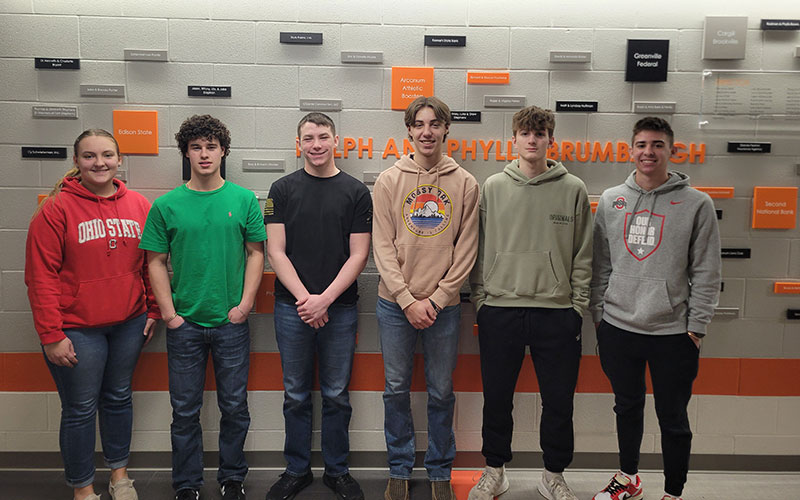
by CrownRandall | Feb 10, 2025 | Agriculture
ARCANUM – Arcanum MVCTC FFA members recently competed in the Ohio FFA Farm and Agribusiness Management Contest. The team from Arcanum placed 1st overall in the State out of 104 schools and qualified to compete in the National Contest during the National FFA Convention in October.
The top-scoring members were Charlie Weiss (1st Overall), Katelynne Michael (2nd Overall), Landon Miller, Ethan Hartman, Lance Brinksneader and Seth Fearon. The purpose of the Farm Business Management Contest is to provide students with the opportunity to make a practical application of the knowledge and skills learned in the production agriculture curriculum in solving typical farm management problems.
The online written test is designed to test the team members’ understanding of economic principles in farm business management. The problem-solving portion of the CDE is designed to determine the team members’ ability to apply economic principles of farm business management to actual problems and to define the decisions that need to be made.
Team member Katelynne Michael shared… “We finished 2nd in the State last year and were able to compete, and win, the Big E contest. We really worked hard this year to move up into that 1st place spot so that we could go to the National Contest.”





